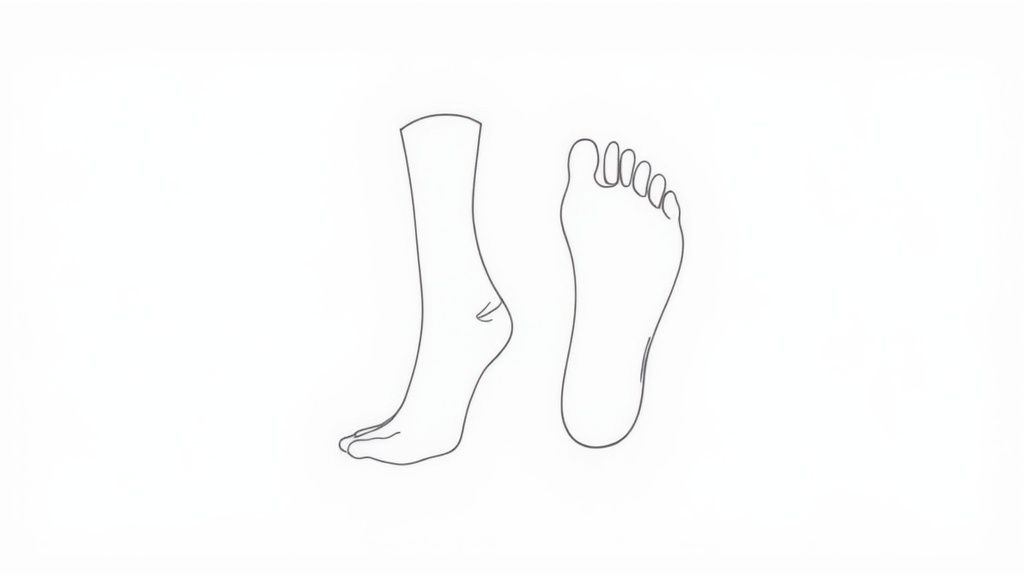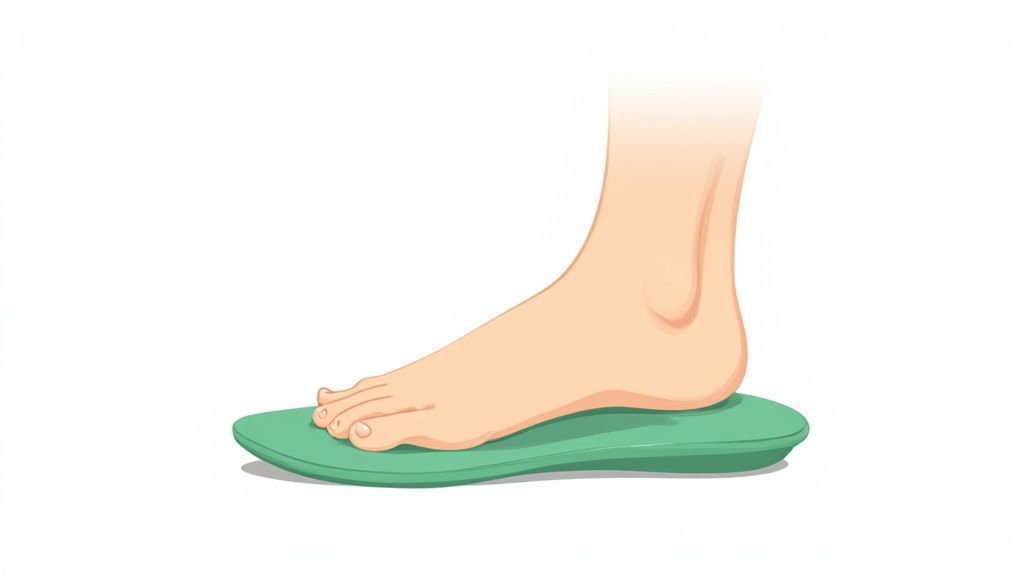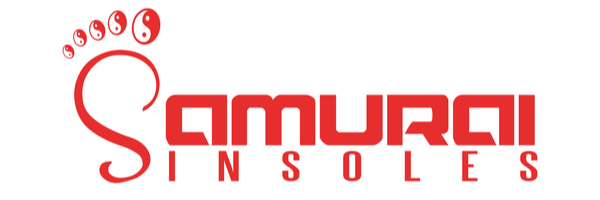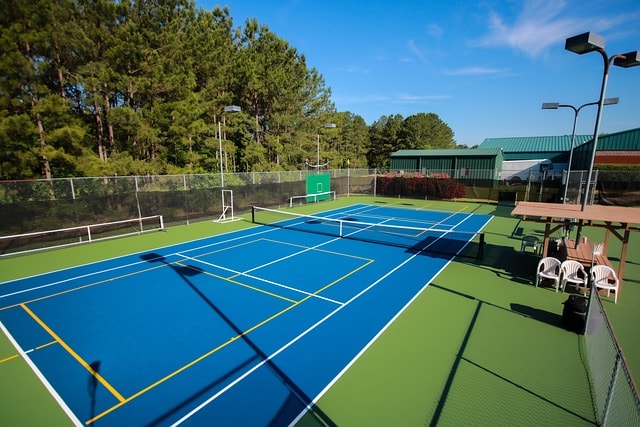If you're dealing with nagging foot, knee, or even back pain, the answer might lie in a pair of specialized shoe inserts known as orthotics. These are designed specifically to correct an excessive inward roll of the foot, a common issue called overpronation. By giving your arch targeted support and keeping your heel stable, they help realign your entire lower body, often resolving pain that you thought was completely unrelated to your feet.
What Is Foot Pronation and How Does It Affect Me?

Think of your body like a building and your feet as its foundation. If the foundation is cracked or uneven, the entire structure above it becomes unstable. Walls start to crack, doors don't close right—you get the picture. Your body is no different. When your feet aren't properly aligned, the stress travels upward.
Foot pronation is simply the natural inward roll your foot makes every time it hits the ground. This isn't a bad thing; in fact, it’s a crucial shock-absorbing mechanism that helps your body adapt to the ground beneath you. When your foot rolls just the right amount, we call it neutral pronation.
The trouble starts when that roll becomes excessive. This is overpronation. Instead of a controlled, slight roll to absorb impact, your arch flattens out and your ankle turns too far inward. This seemingly small glitch in your mechanics can set off a cascade of alignment problems throughout your body.
Understanding the Spectrum of Foot Motion
It’s easiest to picture foot motion on a spectrum with three key points. Each one describes how your foot lands and pushes off as you walk or run.
- Neutral Pronation: This is the sweet spot. Your foot rolls inward by about 15 percent, which is perfect for absorbing shock. You then push off evenly from the ball of your foot.
- Overpronation: Here, your foot rolls inward more than 15 percent. Your arch collapses too much, forcing the big toe and second toe to handle all the work when you push off. If you have flat feet, you're likely an overpronator.
- Supination (or Underpronation): This is the opposite problem. Your foot doesn't roll inward enough (it may even roll outward), which concentrates all the force on the outer edge of your foot and your smaller toes.
Overpronation is the hidden culprit behind an incredible number of everyday aches and pains. Fixing this isn't just about making your feet feel better—it's about restoring balance to your entire body.
The Ripple Effect of Poor Foot Mechanics
When your feet overpronate, the problem doesn't stop at your ankles. That excessive inward rotation travels right up your leg, forcing your tibia (shin bone) to twist inward, too. This subtle but constant stress works its way up the kinetic chain, putting strain on your knees, hips, and lower back.
This is exactly why you might have chronic knee pain that never seems to improve, or a persistent ache in your hip that just won't quit. These are often just symptoms of a foundational issue that starts all the way down at your feet.
This poor alignment is also a direct contributor to some of the most common foot problems:
- Plantar Fasciitis: The collapsing arch puts tremendous strain on the plantar fascia ligament.
- Bunions: Unstable foot mechanics can force the big toe joint out of alignment.
- Shin Splints: The inward twisting of the tibia overstresses the muscles in your lower leg.
- Achilles Tendonitis: Misalignment places extra tension on the Achilles tendon with every step.
It's no surprise that as more people understand these connections, the demand for effective solutions has grown. The orthopedic insole market, valued at USD 3.2 billion in 2025, is on track to reach an estimated USD 6.7 billion by 2035. This huge jump shows a real shift in how we think about foot health and its link to our overall well-being.
Of course, insoles are just one part of the solution. Learning more about the importance of overall foot health and strengthening can give you a more complete toolkit for keeping your foundation strong and pain-free.
How Orthotics Guide Your Foot Back to Balance

It seems almost too simple, doesn't it? How can a simple insert you slide into your shoe fix complex alignment issues that send pain shooting through your body? The secret is that a real orthotic isn't just a squishy cushion. It’s a biomechanical tool, engineered to actively correct how your foot moves.
Think of it like a wobbly table. You could just learn to live with it, or you could slip a small, firm wedge under the shaky leg. Instantly, the table is stable. An orthotic for pronation works on the exact same principle. It provides targeted support right where your foot’s structure is failing, bringing stability back from the ground up.
These devices aren't passive. They apply precise forces to guide your foot mechanics back to a more ideal state. It’s a subtle but powerful correction that happens with every single step you take.
The Mechanics of Correction: Firm Support and Stability
A well-designed orthotic for pronation doesn't just jam your foot into place. Instead, it uses a few key features that work together to gently steer your foot away from that excessive inward roll.
At the very heart of this correction is firm arch support. When you overpronate, your arch collapses under your body weight. A structured orthotic acts like a support beam, preventing that collapse. This is so important—soft, gel-like insoles might feel nice for a moment, but they offer zero structural support and can sometimes even make the problem worse.
The other non-negotiable feature is a deep heel cup. This cradles your heel, locking it into a stable, centered position. By stopping the heel from tilting inward, it helps align the entire subtalar joint—that's the joint just below your ankle that controls most of your foot's side-to-side motion.
An effective orthotic does more than just support; it actively re-educates your foot. It provides the external stability your foot lacks, allowing the muscles and ligaments to function in a healthier, more aligned pattern.
This one-two punch of arch support and heel stabilization creates a powerful corrective effect. It stops that excessive inward roll before it can start, which in turn stops the dysfunctional chain reaction from traveling up to your knees, hips, and back.
Real-World Impact: How Orthotics Restore Balance
Go grab an old pair of shoes and look at the soles. If you overpronate, you’ll almost certainly see heavy wear along the inner edge. That's the physical proof of your foot's unbalanced motion.
Orthotics get to work by evening out this pressure. By supporting the arch and stabilizing the heel, they help your foot land and push off more neutrally. This leads to some immediate, tangible benefits:
- Reduces Strain: It takes a massive amount of tension off the plantar fascia ligament, which is one of the biggest culprits behind heel pain.
- Improves Alignment: It helps keep your ankle, shin, knee, and hip in a much more natural line, cutting down on those unnatural twisting forces.
- Prevents Fatigue: Your body isn't working so hard just to stay stable. Better efficiency means less foot and leg fatigue at the end of the day.
This isn't just a temporary band-aid. By consistently wearing orthotics for foot pronation, you’re giving your body the stable foundation it needs to finally heal from the chronic stress of poor alignment. It’s a direct solution that gets to the root mechanical cause of your pain and puts you on the path to real, lasting relief.
Choosing the Right Orthotic for Pronation Control

Walking into a store or browsing online for orthotics can feel overwhelming. With so many options screaming for your attention, how do you tell a real solution from a flimsy gimmick? It’s a critical choice, because the wrong insole won't just waste your money—it could leave you without the relief you desperately need.
To find what actually works, you have to look beyond the flashy packaging and marketing hype. Effective orthotics for foot pronation aren't a matter of opinion; they have specific, non-negotiable design features that work together to fix your alignment. Once you know what to look for, you can confidently pick an insole that delivers genuine support and lasting comfort.
The Problem With Soft, Squishy Insoles
When your feet hurt, what’s the first thing you think of? A soft, gel-filled cushion, right? It seems logical, but for a structural issue like overpronation, it's exactly the wrong approach.
Think of it like this: you wouldn't try to prop up a leaning wall with a big, fluffy pillow. The pillow would just compress, doing nothing to correct the tilt. Soft insoles behave the exact same way. They completely collapse under your weight, offering zero structural support to stop your arch from caving in. They might feel nice for a second, but they do nothing to address the root cause of the pain.
To get to the heart of what makes an orthotic truly effective, it's best to look at the features that provide real, mechanical correction.
Below is a quick overview of the essential features that any good pronation control orthotic must have. Understanding these elements is the key to choosing an insole that will actually make a difference.
Essential Features of Effective Pronation Control Orthotics
| Feature | Why It's Important for Pronation Control | What to Look For |
|---|---|---|
| Firm, Structured Arch Support | This is the "support beam" for your foot. It must be strong enough to stop your arch from collapsing under your full body weight. | A semi-rigid shell that doesn't flatten when you press on it. It should resist the force of your arch. |
| Deep, Stabilizing Heel Cup | Pronation begins with the heel. This feature cradles your heel bone, preventing it from tilting inward at the start of each step. | A cupped design at the back of the insole that visibly cradles where your heel sits. This provides critical stability. |
| Durable, Dual-Layer Materials | You need a balance of unyielding support and comfortable cushioning. The right materials achieve this without compromising on either. | A firm base (like polypropylene) for structure, paired with a comfortable, high-density foam top layer for shock absorption. |
| Proper Fit and Sizing | An ill-fitting orthotic can't provide proper correction. It must fit snugly inside your shoe without sliding or bunching up. | Trim-to-fit designs are excellent. Ensure it replaces the factory insole and sits flat in the shoe for the best results. |
These features aren't just "nice-to-haves"—they are the core components that work together to realign your foot and provide relief. Let's dig a little deeper into why each one is so crucial.
Feature 1: Firm, Structured Arch Support
The absolute cornerstone of any good pronation orthotic is firm, semi-rigid arch support. This is the non-negotiable part. It acts as the primary support structure for your foot, and it has to be strong enough to hold up against your entire body weight with every single step.
This firmness is what actively stops the arch from flattening too much. It essentially provides the support that your foot's own ligaments and tendons can't, guiding your foot back into a healthier, more neutral alignment. When you’re looking at an insole, give the arch a good press. If it squishes down easily, it’s not going to do the job.
Feature 2: A Deep, Stabilizing Heel Cup
While arch support gets a lot of attention, it’s only one part of the equation. The second critical piece is a deep, stabilizing heel cup. Remember, the problem of pronation starts the moment your heel hits the ground. If your heel is unstable, it immediately rolls inward, starting a cascade of misalignment all the way up your body.
A deep heel cup works by cradling your heel bone (the calcaneus) and locking it in a stable, neutral position. This initial stability at heel-strike is everything. It stops that excessive inward roll before it can even begin, which allows the arch support to work much more effectively.
An orthotic is a team effort. The firm arch support prevents the foot from collapsing, while the deep heel cup stops the problem before it even starts. You need both for true pronation control.
Feature 3: The Right Materials for Support and Comfort
The materials used in an orthotic dictate its ability to provide both support and comfort. You need a core that is firm enough to do the heavy lifting but has just enough give to not feel like you’re standing on a rock.
Look for insoles built with a durable, semi-rigid material like polypropylene for the main supportive shell. This shell should then be covered with a top layer of high-quality foam for cushioning. This dual-layer approach gives you the best of both worlds: unwavering support from the core and comfortable shock absorption from the top. Professionals who have completed a Foot Health Care Practitioner course are trained to recognize these crucial material differences.
Feature 4: Getting the Perfect Fit
Finally, even the most expertly designed orthotic is useless if it doesn't fit your shoe correctly. The insole needs to sit snugly from heel to toe, without any buckling or sliding around. Most quality over-the-counter orthotics are designed to be trimmed to fit, which allows you to get a custom-like fit for your specific shoes.
For the best results, always take out the flimsy factory insole that came with your shoe before putting in the new orthotic. This ensures it sits flat and can provide the correction it was designed for. If you're looking for specific recommendations that check all these boxes, take a look at our guide on the 12 best orthotic insoles for pronation.
Custom Orthotics vs. Over-the-Counter Solutions

So, you’ve realized that you need a real orthotic to get your pronation under control. Now you're facing the big question: Should you go the traditional route with expensive, fully custom orthotics from a podiatrist, or is a high-quality, over-the-counter (OTC) solution the better choice?
This isn't a simple "good vs. bad" decision. Both options have real pros and cons, and understanding them is the key to finding what works for your feet, your lifestyle, and your wallet.
The Custom Orthotics Path
Think of custom orthotics like a prescription pair of glasses, but for your feet. They are designed and built with exacting precision to fit your unique foot structure—and nobody else's. This whole process is overseen by a podiatrist, a doctor who specializes in foot medicine.
Getting custom orthotics starts with a detailed biomechanical evaluation. The podiatrist will watch you walk, examine your feet, and often take a 3D scan or even a plaster cast. All that data gets sent to a specialized lab where your one-of-a-kind orthotics are made.
A true custom orthotic is a medical device. It’s prescribed by a doctor and molded to the exact contours of your feet to address severe or complex biomechanical problems that don't respond to standard support.
Because they're so personalized, custom orthotics can deliver a level of correction that's hard to match, especially for very specific or severe conditions. If you have a significant structural issue, a noticeable difference in leg length, or a complex walking pattern, this level of detail might be exactly what you need.
But all that precision comes with a hefty price tag. Custom orthotics can easily run you $400 to $800, and insurance often won't cover the cost. There’s also a big time commitment; it can take several weeks from your first appointment to actually getting your orthotics.
The Over-the-Counter (OTC) Solutions Path
The other option is to go with modern, high-quality over-the-counter orthotics. It's really important to draw a line between these and the flimsy gel cushions you might grab at the pharmacy. We're talking about podiatrist-designed, anatomically shaped insoles built on the same foundational principles as custom orthotics.
These advanced OTC options offer the essentials: firm, structured arch support and a deep, stabilizing heel cup. These are the key features you need to effectively control mild to moderate overpronation. The biggest wins here are accessibility and affordability. You can get them quickly, often delivered right to your door, for a small fraction of what customs cost.
This accessibility has fueled a huge market. In fact, the market for foot orthotic insoles hit USD 3.36 billion in 2022 and is expected to keep climbing. This growth is all about people like you looking for effective, easy-to-get solutions for common foot pain tied to pronation.
For the vast majority of people dealing with the effects of overpronation—things like plantar fasciitis, nagging foot fatigue, or related knee pain—a well-designed OTC orthotic provides all the correction needed to feel relief.
Making the Right Call for You
So, which way should you go? It all boils down to your specific situation.
-
Go Custom If: You’ve been diagnosed by a doctor with a severe foot deformity or a complex medical condition. Also, consider it if you've already tried top-tier OTC options without success. The precise, prescribed correction is what you're paying for.
-
Choose High-Quality OTC If: You have mild to moderate overpronation and are dealing with common related pains like plantar fasciitis. This is the perfect path if you want an effective, affordable, and immediate solution.
For most people, starting with a great pair of OTC orthotics is the most logical first step. It lets you feel the benefits of proper support without the major financial and time commitment of going fully custom. If you want a deeper dive into what to look for, check out our guide on how to choose the right insoles for your needs.
Making Orthotics a Part of Your Everyday Routine
Getting a great pair of orthotics is a huge first step toward feeling better. But the next, and just as important, part of the journey is making them a natural part of your daily life. It’s a process, so be patient with yourself—letting your body adjust is the real key to lasting comfort and success.
Think of it like getting a new pair of prescription glasses. Your brain and eyes need a moment to get used to a new way of seeing. It’s the same for your feet, ankles, and leg muscles. They have to adapt to the new, healthier alignment your orthotics for foot pronation provide.
The Essential Break-In Period
You wouldn’t run a marathon without training, right? Well, you shouldn’t wear new orthotics for eight hours straight on day one, either. The best way forward is to ease into it, giving your body the time it needs to adjust to the new support under your feet.
A slow and steady break-in period works for almost everyone. Here’s a simple schedule you can follow:
- Days 1-3: Start by wearing your orthotics for just 1-2 hours a day. Simply pay attention to how your feet are feeling.
- Days 4-7: Bump that up to 3-4 hours daily. Feel free to split this into a couple of shorter sessions if that feels better.
- Week 2: Keep adding about an hour of wear time each day. By the end of this week, you should be able to wear them comfortably through a full workday or a long outing.
It’s completely normal to feel some initial awareness, maybe even a little soreness in your arches or leg muscles. That’s actually a good sign! It means the orthotics are doing their job and your body is starting to realign. If you feel any sharp or pinching pain, though, take them out and give your feet a rest.
Practical Tips for Long-Term Success
To really get the most out of your orthotics, a few simple habits can make all the difference. These tips will help you make sure your insoles fit well, last longer, and keep giving you the support you need.
Choose the Right Shoes
Your shoes and orthotics are a team—they have to work together. The most important feature to look for in a shoe is a removable factory insole. Taking out the original insert creates the space your orthotic needs to sit flat and function properly. Sneakers, work boots, and casual walking shoes are usually great choices.
Care and Maintenance
Taking good care of your orthotics will make them last much longer. For most, a simple wipe-down with a damp cloth and a bit of mild soap is all you need. Just be sure to never soak them in water or toss them in the washer or dryer. Heat and too much moisture can break down the supportive materials.
Troubleshooting Common Issues
Every once in a while, you might hear a little squeak from your shoes. This is almost always caused by friction between the orthotic and the shoe’s interior. A quick fix? Sprinkle a little baby powder or talcum powder inside the shoe. It usually solves the problem instantly.
Folding orthotics into your active life, especially for high-impact sports like running, is a smart move for preventing injuries and boosting performance. This same dedication to optimizing your body should apply to other key areas, like following an ultimate marathon nutrition plan for success. By making your orthotics a consistent part of your routine, you’re building better health from the ground up and turning a simple purchase into a powerful, sustainable habit.
Why Samurai Insoles Are a Top Choice for Pronation
Once you realize that real pronation control isn't about soft, squishy gels but about specific, supportive features, finding the right insole gets a lot easier. You need something that fills the huge gap between those flimsy drugstore inserts and the expensive, drawn-out process of getting custom orthotics. This is exactly the space where Samurai Insoles shine.
They were developed by a podiatrist who saw a recurring problem in his practice. Patient after patient needed genuine, medical-grade support but couldn't stomach the high cost and hassle of the custom route. So, he designed Samurai Insoles to pack those essential corrective features into an affordable, ready-to-use insole.
The result is a line of insoles that gets straight to the point, focusing on the core mechanics of a healthy foot. These aren't just cushions; they're smartly engineered tools designed to correct the root cause of overpronation.
Podiatrist-Designed Engineering You Can Actually Feel
Samurai Insoles are built on the two non-negotiable features we've covered: firm support and a heel that keeps you stable. Instead of a generic, one-size-fits-all design, they offer different models so you can find the perfect match for your needs, all while getting the same fundamental benefits.
- Firm, Springy Arch Support: Forget soft foam that flattens out. Samurai Insoles have a firm, springy inner core that acts like a support beam for your arch. It holds its shape, preventing your arch from collapsing and reining in overpronation with every single step you take.
- Deep, Stabilizing Heel Cup: Every insole is molded with a deep heel cup. This cradles your heel, locking it into the proper position to give you a stable foundation. It stops that excessive inward roll right where it starts—at the beginning of your stride.
This one-two punch is what makes them so effective. By getting this foundational support right, they help bring your entire lower body back into alignment. That’s why the relief often extends beyond your feet to your knees, hips, and even your back.
Samurai Insoles were born from a simple idea: everyone deserves access to the kind of support that can truly make a difference, without needing a prescription. Their design proves that you don't need a custom mold to get effective pronation control.
Accessible, Medical-Grade Support for Everyone
The demand for real foot solutions is exploding. The market for orthopedic shoes, which often rely on orthotics for foot pronation, was valued at around USD 4.36 billion in 2025 and is on track to more than double by 2035. This huge growth shows that more and more people are looking for serious relief from common issues like plantar fasciitis and bunions.
Samurai Insoles meet this need head-on by making podiatrist-designed technology both affordable and easy to get. They deliver the structural integrity you need for true biomechanical correction, giving you a powerful alternative to spending hundreds of dollars and waiting weeks for a custom device.
You can learn more about why Samurai Insoles are a top choice for pronation in our detailed article. This focus on quality and accessibility is why so many people have finally found lasting relief, taking a crucial step toward better health from the ground up.
Common Questions About Orthotics for Pronation
Deciding to give orthotics a try is a fantastic first step toward getting rid of your foot pain. But it's totally normal to have a few practical questions before you go all in. Let's walk through some of the most common things people ask.
How Long Until I Feel a Difference?
You'll feel the physical support of an orthotic the moment you put it in your shoe. That lift is immediate. But the real, lasting benefits? Those take a little more time.
Think of it this way: your body has gotten used to a certain (and painful) alignment. It can take a few weeks for your muscles and ligaments to adapt and settle into their new, healthier position. As your body realigns, that constant strain on your feet, knees, and back finally starts to ease up. Be patient during this initial break-in period—sticking with it is how you get to the good part.
Can I Use Orthotics in All My Shoes?
The short answer is, almost! High-quality orthotics are designed to work best in shoes with removable factory insoles and a bit of room. Sneakers, walking shoes, and work boots are perfect.
Where you might run into trouble is with very narrow shoes, like some dress shoes, or open-backed footwear like sandals. The orthotic needs a solid, enclosed shoe to work with so it can do its job without sliding around. If the shoe has a back and enough space, you're probably good to go.
Think of orthotics like glasses. For a structural issue like overpronation, you get the benefits when you wear them. Consistent use provides ongoing support and is key to preventing pain from returning.
Will I Need to Wear Them Forever?
For a structural condition like overpronation, it's best to think of orthotics as a long-term tool, not a one-time cure. They’re a lot like eyeglasses—they correct the problem beautifully while you're using them.
By wearing them consistently, you prevent that excessive inward roll of your foot and stop the chain reaction of pain before it even starts. For most people dealing with overpronation, making orthotics a daily habit is the simplest way to stay active and live without that nagging pain.
You’ll know they are doing their job when you start noticing:
- Less aching in your feet, knees, or back after a long day.
- Your feet and legs don't feel as tired after being on them for hours.
- A solid, stable feeling under your arch with every step you take.
Ready to feel what a difference real, podiatrist-designed support can make? Samurai Insoles were specifically created to correct overpronation and deliver relief that lasts. Find your perfect pair today!



